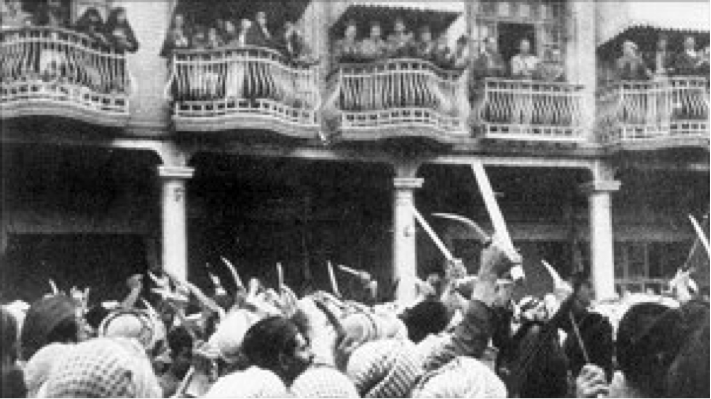Farhud Anti-Jewish Riots Take Place in Baghdad

June 1, 1941
After World War I, Iraq was under the British Mandate, in accordance with the plan put forth by the League of Nations. In April 1941, a pro-Nazi government seized power and it took the British three months to regain control of the government. During the period of pro-Nazi rule, radio stations routinely broadcast anti‐Semitic propaganda, anti- Jewish slogans were written in the streets, and Muslim-owned shops were visibly identified to protect them from anti‐Jewish violence. There were approximately 130,000 Jews in Iraq at the time. Ten years later, 90% of the Jews had left and most had immigrated to Israel. (See Operation Ezra and Nehemia.) In the power vacuum created between the fall of the pro-Nazi government and the reestablishment of British rule, a pogrom, known as the Farhud, broke out against the Jews of Baghdad. The Farhud took place on the Jewish holiday of Shavuot, which fell on June 1st and 2nd. It resulted in 180 dead; over 240 wounded; 100 Jewish houses destroyed; and over 500 Jewish businesses looted. Very few of the rioters were arrested, and the British took no responsibility for their failure to intervene and protect Jewish life and property. The Farhud was a painful indicator that times had changed, and Jewish life in Iraq was no longer secure. Many Iraqi Jews turned to Israel and Zionism. As one Zionist pamphlet from 1944 stated,
Every child remembers these two frightful days which turned out to be days of weeping and appeals for help…We should hear the appeal for help of those girls and women who were touched by the dirty hands. We should share with those children their feelings of terror when they saw with their own eyes their fathers and mothers being killed and dishonored. We should look upon the memory of those days as a guiding light that will show us our way in the dark of the future. (Andrew G. Bostom, The Legacy of Islamic Anti-Semitism: From Sacred Texts to Solemn History, Amherst, NY: Prometheus Books, 2008, p. 663)
The photo shows Farhud rioters in Iraq, June 1941.